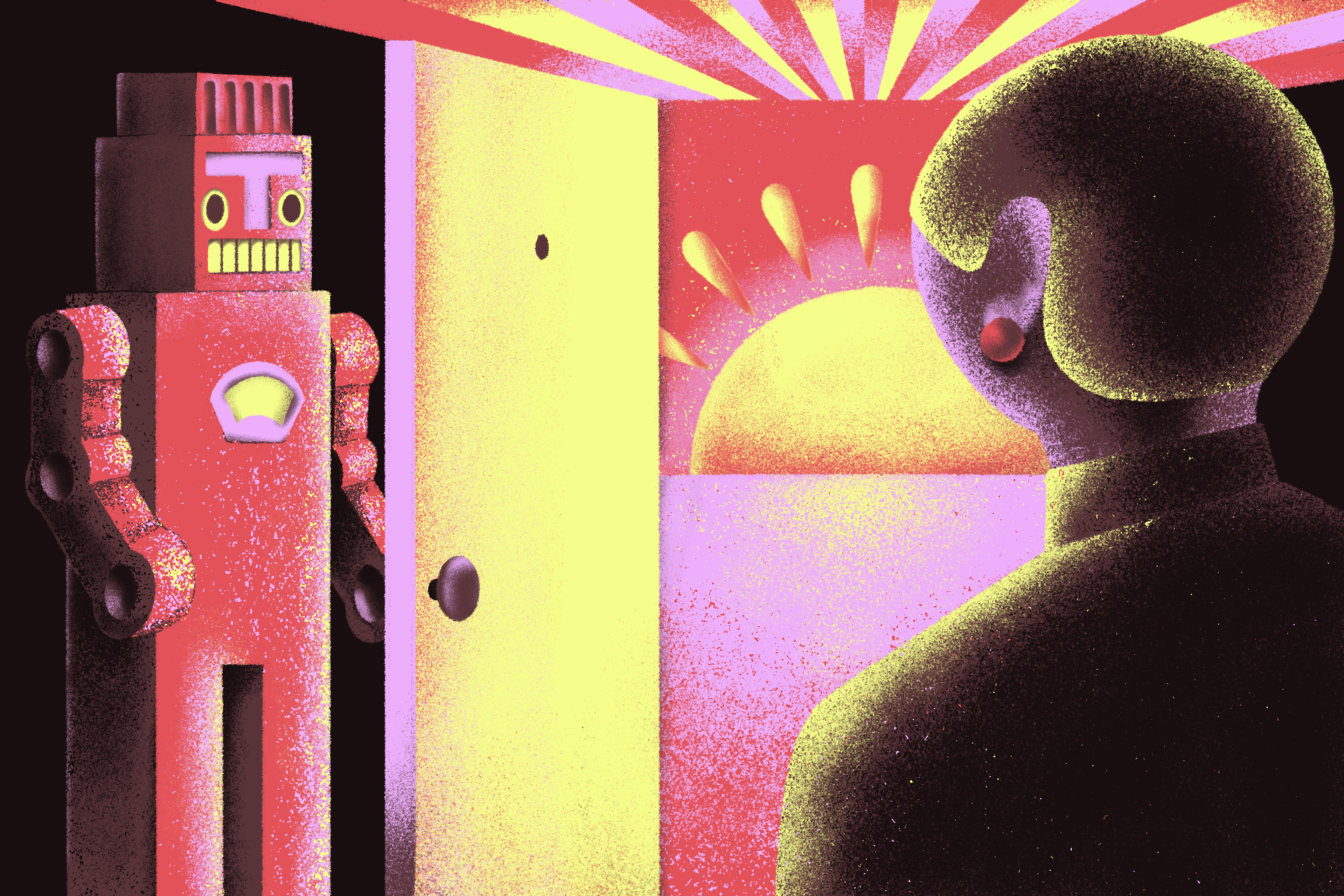In the Bay Area, you can sometimes identify the people most worried about AI by the smiling octopus decal they stick to their computer or hoodie.
This is “Shoggoth with smiley face (opens in new tab),” a meme derived from an H.P. Lovecraft story that, since the early days of ChatGPT, has come to symbolize the fear (opens in new tab) that AI is coming to kill us, or at least take our jobs. The Shoggoth meme is the de facto mascot for AI doomers.
Memes, essentially, (opens in new tab) “take large ideas and reduce them to shareable quips,” said Jamie Cohen (opens in new tab), who teaches media studies at City University of New York. (opens in new tab)Without having to write an essay, doomers who share the Shoggoth meme can easily convey a bunch of complicated ideas about dread, with the help of a whimsical octopus.
But if memes can spread dread, can they also spread optimism?
For the past few years, this question was on the mind of Beatrice Erkers, who leads Existential Hope, a project founded in 2018 by the Foresight Institute, a Bay Area nonprofit for frontier tech, advised by futurist Ray Kurzweil, Stewart Brand, cofounder of The Long Now Foundation, Lawrence Lessig, cofounder of Creative Commons, and Peter Diamandis, founder of XPRIZE.
“Memes and short-form media have a huge impact on how people think, so why not see if they can make people hopeful about the future?” Erkers said.
In September, Erkers launched the Existential Hope Meme Prize, a $10,000 competition to find the best image, GIF, or video that can shift the vibe from AI anxiety to optimism. Submissions are open until Nov. 23 (opens in new tab).
The contest is explicitly positioned as a counter to Shoggoth. “What if we imagined a more positive version of that? What if it was good AI? Or biotech that helps us live longer?” said Erkers.
AI-generated entries are allowed, though the organizers will “screen the slop,” she added.
More than 111 people have submitted memes via a web form after sharing them on a social network. Erkers says she has received entries via X, TikTok, and LinkedIn.
The judging panel includes cognitive psychologist Steven Pinker, “Win-Win” podcast host Liv Boeree, and Jason Crawford, (opens in new tab) whose October 2025 Progress Conference had Sam Altman as keynote speaker. The judging criteria include creativity, optimism, and viral potential.
The submissions include a poem (opens in new tab) typed on white space, a life-optimization diagram that charts happiness on an axis, and a kitten staring out the window absorbing the wonders of the world (opens in new tab). The throughline is tech optimism; it’s essentially a social mood board for a flourishing future.
“We need symbols of what success might look like, not just stories of failure,” Erkers said. “But it’s hard to make a meme that’s both funny and positive, that’s part of the challenge.”
Many submissions rework viral memes, noted José Ramón Lizárraga, a social media scholar at UC Berkeley who assessed some entries for The Standard. These include “Train hits school bus,” (opens in new tab) a captioned image macro meme used to illustrate an unstoppable force smashing a target; “Sudden clarity Clarence,” (opens in new tab) a 2011 reaction meme of a guy having an epiphany; and 2015’s “Me (opens in new tab) vs. me,” a side-by-side caption of conflicting thoughts.
Emotional resonance is key to making a meme sticky, said Benjamin Burroughs, a professor of journalism at University of Nevada Las Vegas, pointing to “I can’t breathe,” “Bernie in mittens (opens in new tab),” and the “This is fine” dog as memes that have crossed political and social divides.
What works, he said, are “memes that remind us of our agency despite the dystopian near-present conditions many feel.” However, to create social change — as opposed to just virality — a meme “needs to have some form of resonance beyond being clickbait.”
Other futurists have taken a different approach to fighting doomerism: building (opens in new tab) AI safety and alignment labs, such as OpenAI cofounder Ilya Sutskever’s Safe Superintelligence (opens in new tab) and former Twitch CEO Emmett Shear’s Softmax (opens in new tab). “We have to build this deeper alignment,” said Shear. “I am afraid of an AI-powered literal arms race.”
Winners of the meme contest will be announced in December and featured on Foresight’s website and socials. “The dream is to have a large pool of shareable, useful memes that can spread,” said Erkers. It’s a low-stakes gamble, she admitted, but one that’s worthwhile.
“Right now, the common knowledge about the future is that it’s going to be bad. … We want to change that.”
